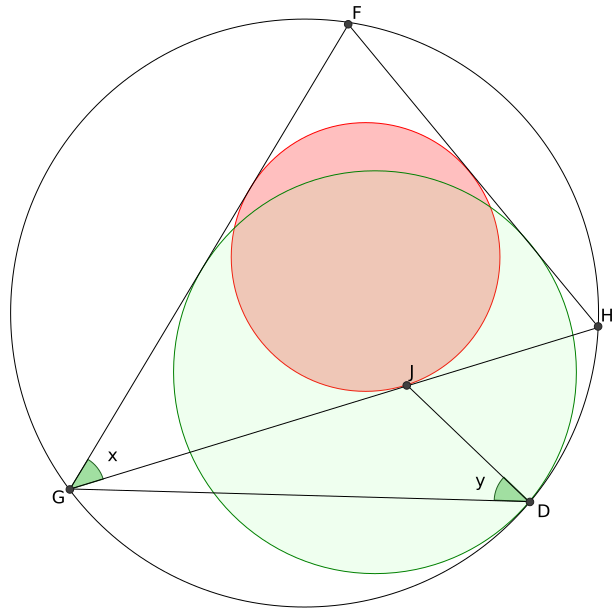Re: HSC 2016 4U Marathon - Advanced Level
Well we can formalise it by using limits, but we have done that already, so... yeah.
If we wish to piece it together formally:
$ denote the ratio for $n$, we have:$\\ \therefore \frac{1}{12\sqrt{3}} < R(4) < R(5) < R(6) < \dots < R(n-2) < R(n-1) < R(n) < \frac{1}{4\pi}\\ \forall n \in \mathbb{N},\; n \notin \{0,1,2\}\\$This is essentially the isoperimetric inequality in two dimensions, as desired.$)
That is better, and more or less what I wanted people to say for 2.
One thing though: Monotonicity isn't so essential here if you have already calculated R(n) explicitly.
What is important is just that each R(n) is smaller than 1/4*pi. (*)
(And if we have already calculated R(n) explicitly, and you really wanted to obtain montonicity, we wouldn't need any geometric reasoning as I produced on request earlier, as you already have the explicit values and the inequality is not a difficult one.)
Assuming we are working with curves that are nice enough to:
- enclose a region with well defined perimeter and area
- be well approximated by polygons (there is a sequence of polygons with vertices on the curves such that the limiting area and limiting perimeter of these polygons is the area and perimeter of the region itself)
(*) tells us that the isoperimetric ratio for such curves is bounded by 1/4*pi.
To additionally show that we cannot beat 1/4*pi as an upper bound, we can either
a) compute A/P^2 for a circle. this is cheating in a sense, but whatever.
b) observe that R(n) -> 1/4*pi (an mx2 level limit), and so any smaller real number will not bound all of the R(n).
Where monotonicity IS useful, is finding a cheap way to pass from dealing with arbitrary polygons to convex polygons. (As the convex hull of a polygon is a convex polygon of lower degree with larger area and smaller perimeter.)
$ denote the ratio for $n$, we have:$\\ \therefore \frac{1}{12\sqrt{3}} < R(4) < R(5) < R(6) < \dots < R(n-2) < R(n-1) < R(n) < \frac{1}{4\pi}\\ \forall n \in \mathbb{N},\; n \notin \{0,1,2\}\\$This is essentially the isoperimetric inequality in two dimensions, as desired.$)

